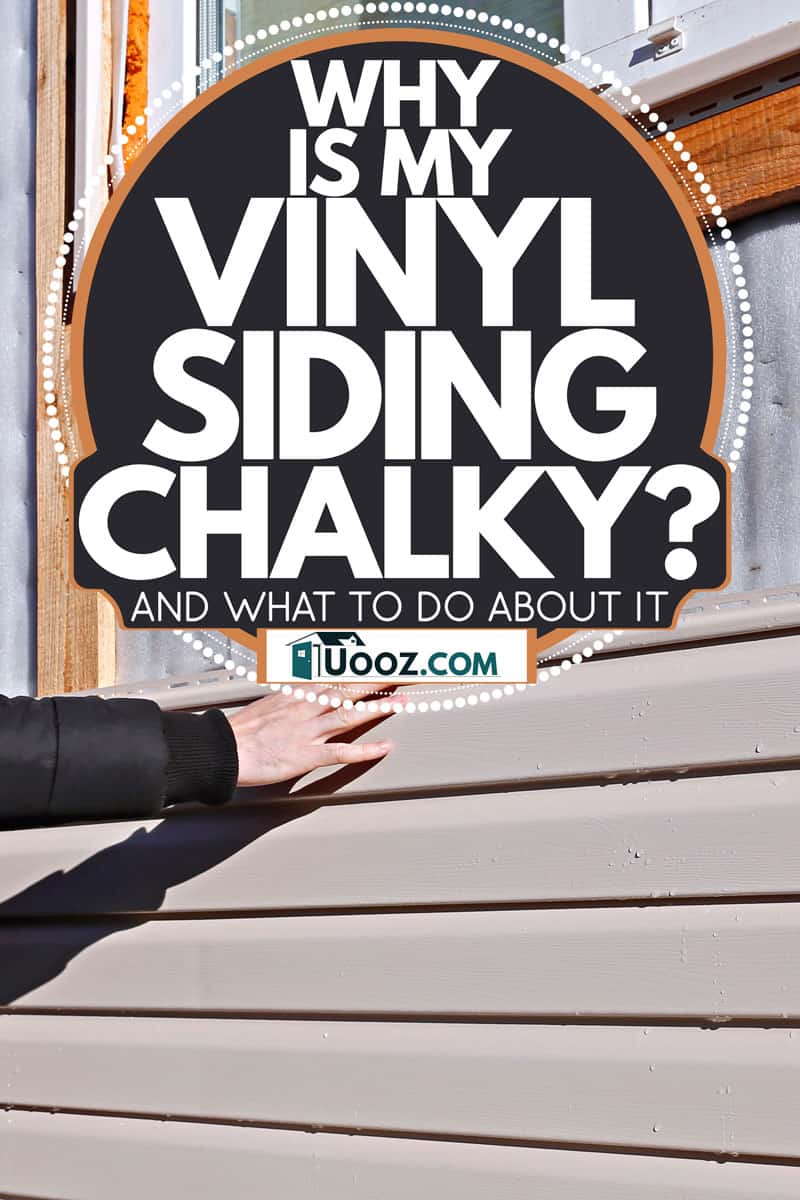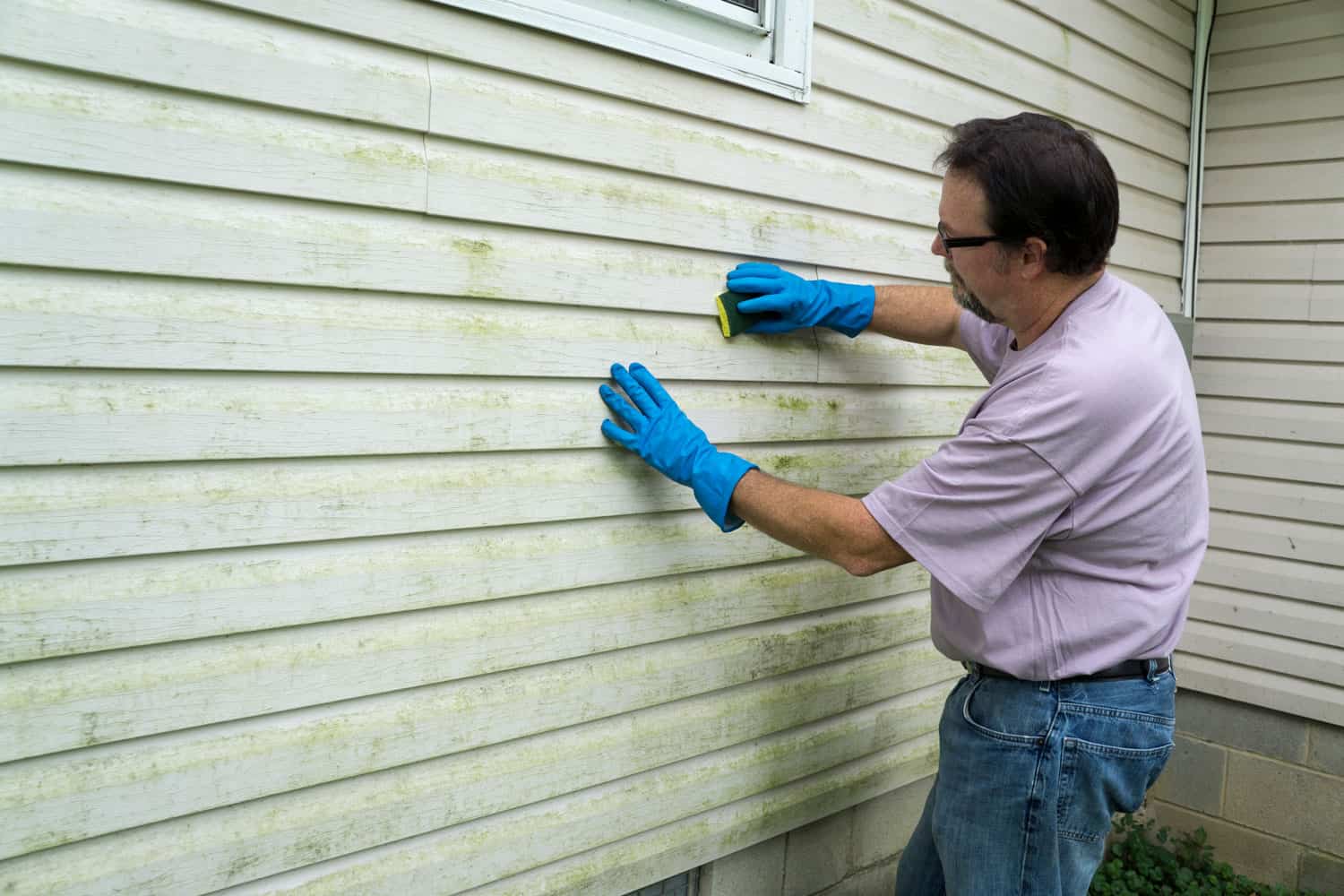You've noticed that your vinyl siding has a chalky appearance and are wondering what to do about it? This oxidation process is a common phenomenon for many homeowners, but you do want to take care of it. We've gathered information from experts about the best ways to deal with chalky vinyl siding.
When vinyl siding is chalky, it's because of an oxidation process that happens when the polyvinyl chloride (PVC) material is exposed to oxygen. It's totally normal, but you do want to remove it. Over time it can lead to the deterioration of your siding.
Let's take a look at how to remove this harmful oxidation from your siding. We'll also discuss how often to clean your siding in general and which cleaners are harmless. We'll also visit the possibility of painting your siding. So please keep reading!

Chalky Vinyl Siding And What To Do About It

Vinyl siding is one of the most popular home exterior sidings available on the market today. It's affordable, long-lasting, and easy to maintain. Because it's made of PVC, there is an oxidation reaction that can happen with some siding. When this chemical reaction between the material and oxygen happens, it creates a film that looks chalky on the surface of your siding.
Not only is it unattractive, but over time it may cause some deterioration of the vinyl. This is why it's important to remove it when you see it appearing on your home's vinyl siding. Let's look at how best to do that.
Prepare To Clean
It's easy to see the oxidation on darker siding, but with the lighter colored siding, you may have to run your hand along the length of it. You'll feel the chalkiness and a build-up on the surface. To clean it, use a vinegar and water solution of 5 cups white vinegar to 1 gallon of water. If you need something a bit heftier, use 1/3 cup of laundry detergent mixed with 4 cups of bleach and a gallon of water. Don't forget to wear a pair of safety goggles to keep any cleaner out of your eyes.
This is great stuff for cleaning vinyl siding. Click here for this cleaner on Amazon.
A great pair of safety glasses are an important feature in any homeowner's tool kit. Whatever type of cleaner, chemical, or solvent you may be using, these glasses protect your eyes from harm.
Click here for this pair on Amazon.
Pre-Rinse Your Siding And Start Cleaning In Sections
Now you want to hose down your siding with a good soaking of water. Once it's pre-rinsed, start working in small sections with your cleaning solution. If you have a one-story home, you can probably do it with a soft brush and a bucket, but for any home, it's going to be easiest with a pressure washer that you can load up with your cleaning solution.
Rinse, scrub, and rinse again in sections, working your way around the home to rid it of the chalky oxidation. Be sure and give your home and siding a yearly check to ensure no new oxidation starts appearing. Staying on top of it is a way to preserve and protect your home's value.
Hiring A Professional Might Save You Money
If you're not super handy or don't own a hire powered pressure washer or have a multi-story home, hiring a professional siding cleaner might save you money in the long run. You'll protect your siding from oxidation, save yourself some hours of labor, and not have to buy any special tools or equipment. But ultimately, whichever way you choose to do it, the most important thing is getting the chalky oxidation off of your siding.
How Often Should You Clean Your Vinyl Siding?
A general rule of thumb for cleaning vinyl siding is to do it every two years. If you live in a damp climate where mold might have more of a tendency to grow, once a year may better for the look of your home. Keep in mind that if you've moved into a new-to-you home that is in major need of new paint or a thorough cleaning, be careful not to pressure wash your siding. It's possible that before 1978, any paint used on a home exterior might contain lead.
If that seems like too much work, you might be able to extend a full cleaning by a few years if you touch up the problem spots every year. Then you might be able to go 3 or 4 years between full home cleanings.
Will Vinegar Harm Vinyl Siding?
Vinegar is a great cleaner in all sorts of circumstances, including your vinyl siding. A combination of 70% water and 30% white vinegar will take care of lots of small stains and mildew residue without affecting your siding at all. Where you want to be careful is mixing vinegar with any other cleaners.
Bleach is a great killer of mold and mildew and is another product you can use on vinyl siding, but you don't want to mix bleach and vinegar. Together they can create vapors of toxic chloramine and chlorine, which can burn your eyes and lungs. Thoroughly rinse your siding and any tools you are using to switch from one to the other.
Can I Use Dish Detergent On Vinyl Siding?
Dish soap is one of the recommended cleaners for vinyl siding. It cuts through grease and any types of natural elements from plants that may stick to your siding and attract mold and mildew. Mix it up with warm water, and using a soft scrub brush, scrub the dirty areas, letting the soap rest on the siding for a moment or two before rinsing off.
Always rinse from the top down so that the dirt washes down and off of your siding. The nice thing about using mild dish soap is it won't do much harm, if any, to the plants that you may have near your house.
Can You Repaint Vinyl Siding?
One reason why home builders choose vinyl siding over other types is its durability and relatively low maintenance. It's made to keep its color, so painting shouldn't be necessary. However, if you don't love your home's color and your vinyl is in relatively good shape, painting can be a great option. It won't impact the resale value. In fact, it might even bring it up a bit as your curb appeal might include a more contemporary color.
If your siding is buckling or old, then repainting it won't fix those problems. At that point, it's probably better to just spring for new siding rather than paint over old problems. You may also want to make sure that painting over your vinyl siding won't negate any manufacturer warranty.
Please see our post here: Can Faded Vinyl Siding Be Painted? [3 Things to Consider]
Bye Bye Chalky Ugliness
Your home is your castle, and you want your castle to sparkle. Ugly oxidation will be a bit of an eyesore, but now you have the knowledge and tools to get it cleaned.
If you enjoyed this post on Uooz.com, please check out a few others we hope can help you with other homeownership needs.


